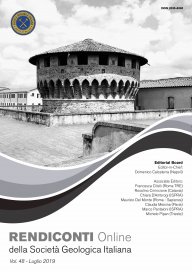
Il Progetto Mappa Italia: proposta di una Metodologia GIS per la definizione di un “Indice di Rischio†Idrogeologico a scala nazionale
Filippo Gatti (2), Claudio Bonetti (1), Giacomo Cappellini (2), Marco Deligios (1), Paolo Locatelli (1), Nicola Pasetti (3), Giancarlo Vismara (3), Debora Voltolina (2), Marco Zazzeri (2) & Simone Sterlacchini (2)
(1) GLOBO Srl - Treviolo (BG).
(2) CNR-IDPA Istituto per la Dinamica dei Processi Ambientali - Sezione di Milano.
(3) ANIA - Associazione Nazionale fra le Imprese Assicuratrici.
Corresponding author e-mail: filippo.gatti1@studenti.unimi.it
Volume: 48/2019
Pages: 54-60
Abstract
“Mappa Italia” is a WebGIS service, issued by ANIA Servizi (Associazione Nazionale fra le Imprese Assicuratrici), conceived to support the business activity of insurance companies. It returns a “Risk Index” for the entire Italian territory by analyzing national institutional geo-hazard maps and the physical exposure of the assets located in each terrain unit used in this study. The analysis has been performed by processing data from census tracts, land use map and flood and landslide hazard maps. Census tracts provides data about population, buildings (residential, commercial and industrial) and firms (number of companies and employees). Data about land use (urban and rural areas), have been extracted from the Corine Land
Cover. Data about flood and landslide hazard have been obtained from institutional maps published by ISPRA (Italian Institute for Environmental Protection and Research). The assets have been classified into four classes (D1, D2, D3, D4) considering their type and amount in each terrain unit using a k-means clustering technique.
Then, four different risk matrixes were applied to get a Risk Index one for each asset class (D1, D2, D3, D4), by plotting the classified asset classes against the probability of occurrence of a given flood/landslide event. Then, a total Risk Index was derived for each terrain unit, by summing up the Risk Index of each asset class.
Insurance companies may access results by a WebApp and a Web Service by authentication Service providing login and password.
This work has to be considered a starting point targeted to assess and make available information on exposure, hazard and of the vulnerable elements.
Keywords
Get Full Text